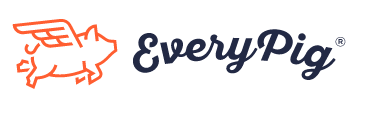

As a founder of a SaaS (software as a service) company, and a former pork producer, I understand the challenges and the appeal of developing software solutions from scratch. Before you decide to dive into creating your own software, let me share some lessons learned from my experience that might help you make a more informed decision.
Building custom software can be a daunting and expensive task, especially for businesses that do not specialize in software development. In most cases, it is much cheaper and faster to buy or license existing software, especially when it comes to managing your pork production operations.
The Costs of Building Custom Software:
- High development rates: In the U.S., software development rates are on the rise. According to Qubit Labs, and my own experience, U.S. development companies charge between $200-$350/hour for project-based development. These costs add up quickly, making custom software development a significant investment.
- Time-consuming process: Developing custom software isn’t a walk in the park. Even relatively simple applications can take months to build, while more complex solutions may require years of development. This means that you’d need to divert valuable time and resources away from your core business to oversee and manage the software development process.
- High risk of failure: Did you know that around 70% of all software projects fail or experience significant setbacks? According to a study by the Standish Group, the main reasons for failure include poor planning, lack of clear goals, inadequate resources, and poor communication. For a pork producer venturing into software development, the risk of project failure is even higher due to the specialized knowledge and experience required to succeed in this field.
Challenges for In-House IT Teams:
- Lack of experience: Your in-house IT team might be great at managing your current systems, but creating and maintaining an application from scratch is a whole different ball game. Software development requires a bunch of specialized knowledge in areas like programming languages, database management, user experience design, and software architecture. Without prior experience, your IT team could face a steep learning curve and struggle to deliver a top-notch application.
- Limited resources: Building a software application needs a lot of resources. Your IT team might not have the tools, infrastructure, or manpower to effectively develop, deploy, and maintain a custom application. This could lead to delays, cost overruns, and a lower quality end product.
- Diverting focus from core responsibilities: When your IT team takes on the task of building a software application, they’ll be shifting their attention from their primary responsibilities, like maintaining and securing your existing systems. This can lead to decreased efficiency and increased risk for your overall IT infrastructure.
- Scalability and long-term maintenance: Developing an application is just the beginning. Once it’s built, your IT team will also be responsible for ongoing maintenance, updates, and addressing any issues that come up. They’ll need to ensure that the application remains scalable and can grow with your business. This can be a challenging and time-consuming responsibility, especially for a team that lacks experience in this area.
Benefits of Licensing Existing Software:
- Cost-effective: Licensing existing software is usually much more cost-effective than building a custom solution. By leveraging the work of experienced developers and existing infrastructure, you can get a powerful solution at a fraction of the cost of building it yourself.
- Faster implementation: With a ready-made software solution, you can begin reaping the benefits of improved efficiency and data management almost immediately. Implementing licensed software is typically much quicker than building a custom solution, allowing you to focus on your core business operations.
- Proven solutions: When you license software from a reputable SaaS provider, you’re choosing a solution that has been tried and tested by other businesses in your industry. This means that you can be confident that the software will work as intended and deliver the results you need.
- Ongoing support and updates: With a licensed software solution, you’ll benefit from ongoing support and updates provided by the software developer. This ensures that your software remains up-to-date and compatible with the latest technology, while also providing you with access to a team of experts should you encounter any issues.
Conclusion:
While the idea of building custom software may seem appealing, the high costs, time-consuming process, and potential for failure make it a risky venture for pork producers who already have enough risk on their plate. By choosing to license software from an existing SaaS provider, you can save time, money, and avoid the pitfalls associated with software development. With proven solutions, ongoing support, and faster implementation, licensing software is almost always the smarter choice for pork producers looking to streamline their operations and grow their business.
Click here to check out how EveryPig can help your pork production business streamline communications and lower your wean to finish mortality rates.







